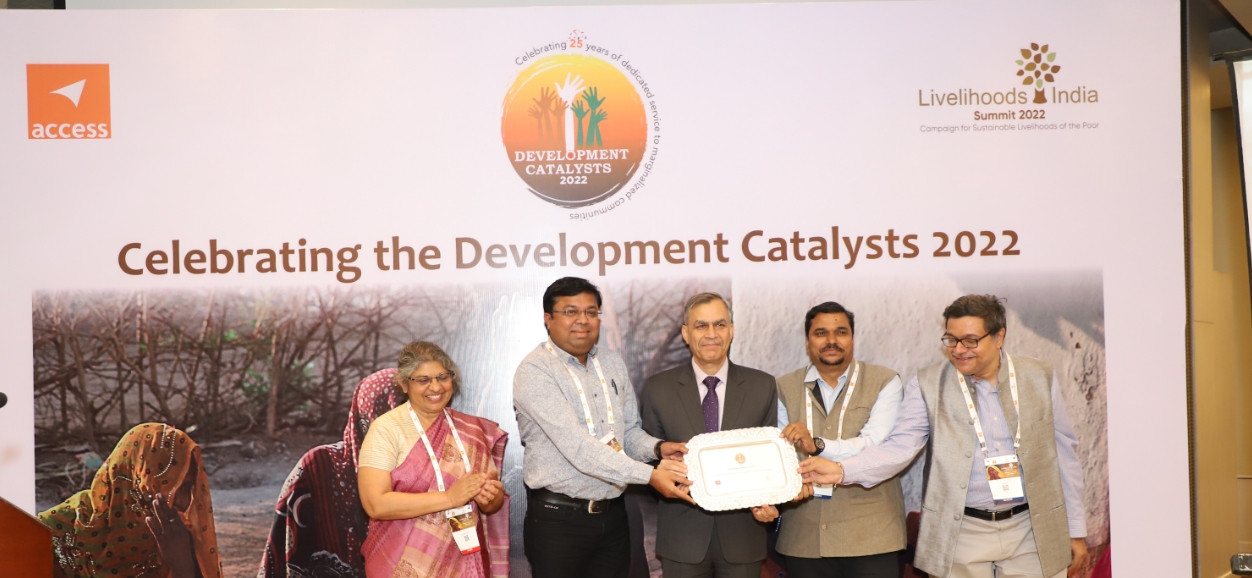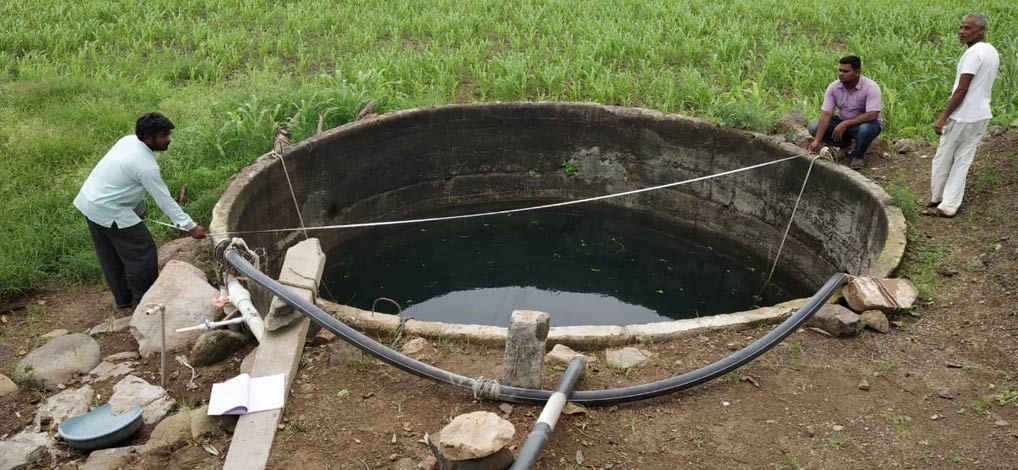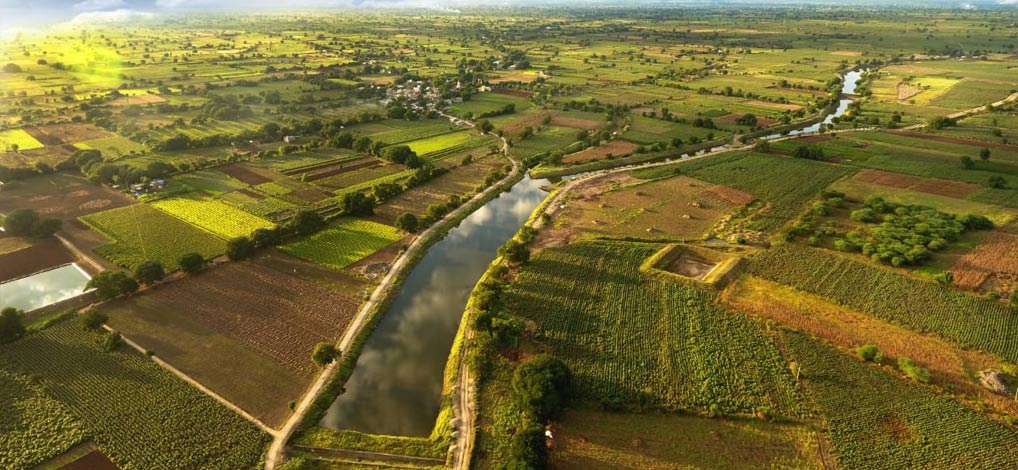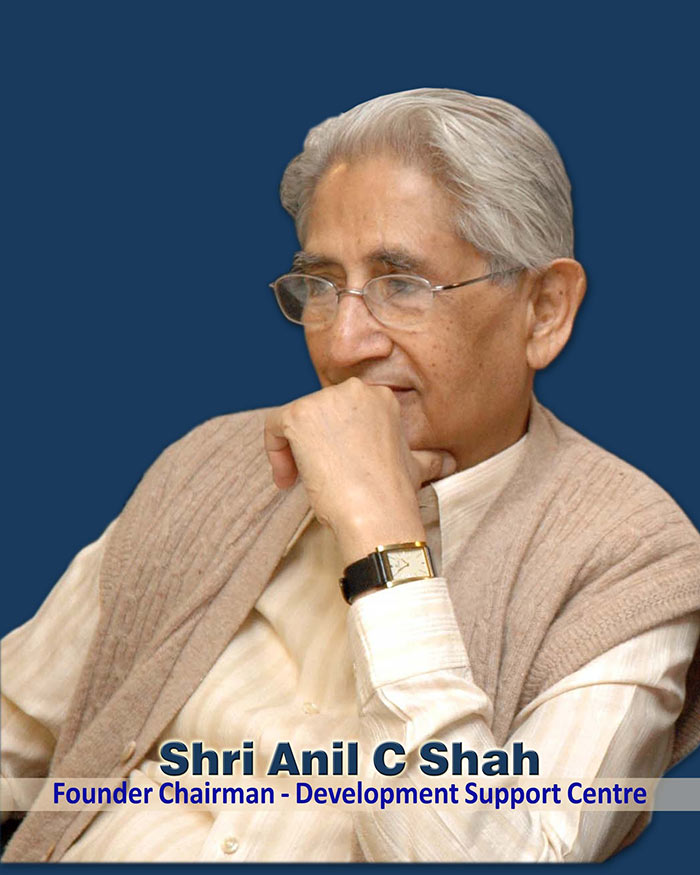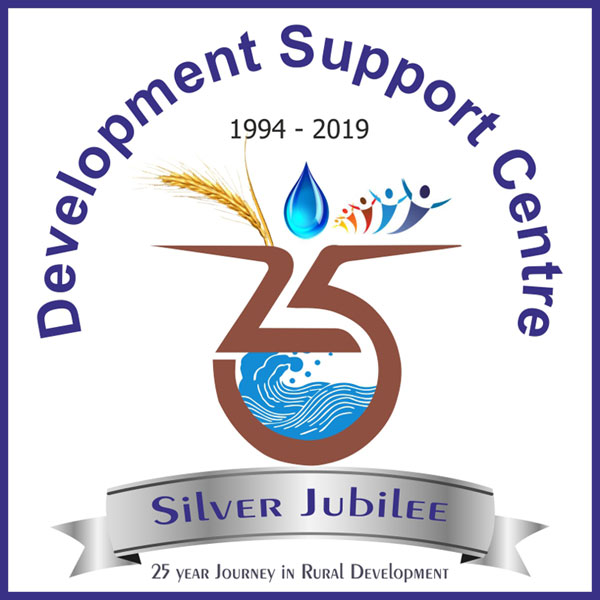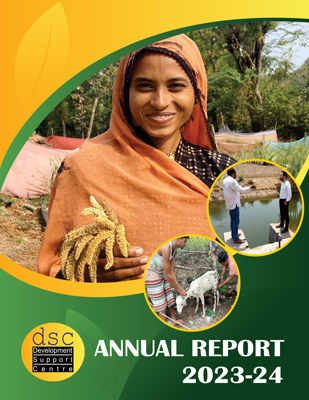- Gujarat Water typology Study - Executive Summary - DSC 2022-23
(Download)

- Impact Assessment of Watershed Programme on Tribal and Other Backward Communities in Sabarkantha District, CfID, December 2006,CfID. 55 p.
 DSC has been working as a Project Implementation Agency (PIA) for the watershed programme of the Ministry of Rural Development, GoI in Meghraj and Modasa Blocks of Sabarkantha district. This programme has four watershed projects across seven villages covering 2055 hectares of land. It was felt that DSC as an implementing agency, there is a danger of losing sight of the main objective. So the CfID, an independent organization, has carried out an impact assessment study of the projects and also suggest the scope for future interventions. The primary objective is to analyze as to what extent the programme has been able to achieve the objective of improved livelihood through natural resource development.
DSC has been working as a Project Implementation Agency (PIA) for the watershed programme of the Ministry of Rural Development, GoI in Meghraj and Modasa Blocks of Sabarkantha district. This programme has four watershed projects across seven villages covering 2055 hectares of land. It was felt that DSC as an implementing agency, there is a danger of losing sight of the main objective. So the CfID, an independent organization, has carried out an impact assessment study of the projects and also suggest the scope for future interventions. The primary objective is to analyze as to what extent the programme has been able to achieve the objective of improved livelihood through natural resource development.
- Catalysing Village Level Institute for Natural Resource Management, Lisa Armstrong, E.M.Shasidharan, Pankaj Kumar, 1997-98. 73p. [Unpublished]
 Documentation of different models and mobilization process operationalised by different NGOs throughout India, identification and prioritisation of variables contributing to the success and sustainability of village institutions in managing natural resources, and arriving at design principles that could be adapted on wider scale without impinging on area specific factors.
Documentation of different models and mobilization process operationalised by different NGOs throughout India, identification and prioritisation of variables contributing to the success and sustainability of village institutions in managing natural resources, and arriving at design principles that could be adapted on wider scale without impinging on area specific factors.
- Scope for Federation of Watershed Associations, Rana Alok Singh, 2003. 35p. [Unpublished].
(Download)
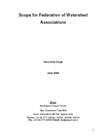 This study was conducted to find out the feasibility of federating the watershed associations for taking up 'Watershed Plus' activities. This study looks critically into the functioning of federations of agriculture-based village level institutions with an emphasis on their financial viability and support provided by promoting non-governmental organizations.
This study was conducted to find out the feasibility of federating the watershed associations for taking up 'Watershed Plus' activities. This study looks critically into the functioning of federations of agriculture-based village level institutions with an emphasis on their financial viability and support provided by promoting non-governmental organizations.
- Eloquent
(Download)
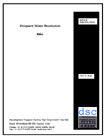 The hypothesis of this study was that watershed villages have advantage over non-watershed villages in drought prone areas. This is the first study to test the hypothesis for the comparison and measurement of the impact of drought on watershed and non-watershed villages in drought-affected districts of Gujarat-the original study that later became Part I of the Longitudinal Study.
The hypothesis of this study was that watershed villages have advantage over non-watershed villages in drought prone areas. This is the first study to test the hypothesis for the comparison and measurement of the impact of drought on watershed and non-watershed villages in drought-affected districts of Gujarat-the original study that later became Part I of the Longitudinal Study.
- Advantage Watershed (In the second year of drought), Anil C. Shah, May 2002. 24p.
(Download)
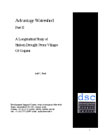 Part II of the longitudinal study comparing and measuring the impact of drought on watershed and non-watershed villages in drought affected districts of Gujarat. Findings of this study indicate that in the second year of drought the watershed village continues to enjoy advantage over non-watershed villages.
Part II of the longitudinal study comparing and measuring the impact of drought on watershed and non-watershed villages in drought affected districts of Gujarat. Findings of this study indicate that in the second year of drought the watershed village continues to enjoy advantage over non-watershed villages.
- Policy Changes That Didn't Work: Forestland in Watershed, Preface by Anil C. Shah, October 2003. 25p.
(Download)
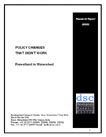 Scientific treatment of watershed is to begin the treatment of the watershed at the ridge and then come down to the valley. Under the ridge to valley approach forestland that are in the ridge has to be treated. In the 1994 watershed guidelines there was no provision for treatment of forestland. Therefore Government of India issued instructions in 1998 that specified that PIA's should also treat the forestland under Joint Forest Management programme. This paper reports the finding that the revised guideline is not being implemented.
Scientific treatment of watershed is to begin the treatment of the watershed at the ridge and then come down to the valley. Under the ridge to valley approach forestland that are in the ridge has to be treated. In the 1994 watershed guidelines there was no provision for treatment of forestland. Therefore Government of India issued instructions in 1998 that specified that PIA's should also treat the forestland under Joint Forest Management programme. This paper reports the finding that the revised guideline is not being implemented.
- Advantage Declined: Part III of A Longitudinal Study of Sixteen Drought-prone Villages of Gujarat, Anil C. Shah, April 2004. 29p.
(Download)
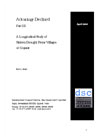 Part III of the longitudinal study comparing and measuring the impact of drought on watershed and non-watershed villages in drought affected districts of Gujarat. This paper highlights that when the drought condition continues for more than two/three years, watershed villages lose their advantage over non-watershed villages. This paper critically brings out declining advantage of watershed villages in continuing drought years.
Part III of the longitudinal study comparing and measuring the impact of drought on watershed and non-watershed villages in drought affected districts of Gujarat. This paper highlights that when the drought condition continues for more than two/three years, watershed villages lose their advantage over non-watershed villages. This paper critically brings out declining advantage of watershed villages in continuing drought years.
- Drinking water security in watershed villages, Rushabh Hemani and Manju Ravi, Preface by Anil C. Shah, August 2004. 27p. (English/ Gujarati).
(Download)
 One of the objectives of the watershed programme is ensure drinking water security in the watershed villages. This study explores what is the status of drinking water security in the watershed villages. One of the major findings suggests that in the watershed villages drinking water security has not been given adequate priority in the watershed planning and implementation. The founding and recommendations of the study led to modifications of the watershed guidelines of Ministry of rural development.
One of the objectives of the watershed programme is ensure drinking water security in the watershed villages. This study explores what is the status of drinking water security in the watershed villages. One of the major findings suggests that in the watershed villages drinking water security has not been given adequate priority in the watershed planning and implementation. The founding and recommendations of the study led to modifications of the watershed guidelines of Ministry of rural development.
- Cost Benefit Analysis of Watershed Development: an exploratory study in Gujarat, Vaibhav Chaturvedi, Preface by Anil C. Shah, March 2005. 84p.
(Download)
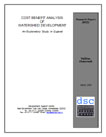 The watershed programme under Ministry of Rural Development is implemented since 1994 and after 10 years it is opportune time to assess what is the benefit in relation to the substantial cost in watershed implementation .The objective of this study is to calculate costs incurred in terms of structures created, human resource cost, administrative expenses incurred under the watershed project against which to measure in money terms the tangible and intangible benefits.
The watershed programme under Ministry of Rural Development is implemented since 1994 and after 10 years it is opportune time to assess what is the benefit in relation to the substantial cost in watershed implementation .The objective of this study is to calculate costs incurred in terms of structures created, human resource cost, administrative expenses incurred under the watershed project against which to measure in money terms the tangible and intangible benefits.
- Maintenance of Physical Assets in Watershed, Vaibhav Chaturvedi,
(Download)
 Under the watershed programme various assets are created in both public and private land. Ensuring proper maintenance of watershed assets is imperative for ensuring continuous return from the high investment made in creating these assets. The objectives of the study are to find out the present state of maintenance of private and public assets in the post implementation period, ascertain the status of fund, meant for the maintenance of the public assets. The status brought out the need for a regime to be established for the maintenance of physical assets at the village level and how the contribution collected for watershed development can be better utilised for post project maintenance and enhancement of the livelihoods of the rural communities.
Under the watershed programme various assets are created in both public and private land. Ensuring proper maintenance of watershed assets is imperative for ensuring continuous return from the high investment made in creating these assets. The objectives of the study are to find out the present state of maintenance of private and public assets in the post implementation period, ascertain the status of fund, meant for the maintenance of the public assets. The status brought out the need for a regime to be established for the maintenance of physical assets at the village level and how the contribution collected for watershed development can be better utilised for post project maintenance and enhancement of the livelihoods of the rural communities.
- Equity in Benefit Distribution in Watershed, Joydeep Sen, May 2005. 50p.
(Download)
 Participatory watershed guidelines emphasised on providing benefits of watershed to the resource poor and deprived communities through income generation and involvement in watershed programme. This paper critically examines who benefits from watershed programme. In this paper an attempt has been made to understand whether women, landless, small and marginal farmers are gaining from the watershed intervention. The study also finds out what is the proportion of investment for generating individual and common benefits.
Participatory watershed guidelines emphasised on providing benefits of watershed to the resource poor and deprived communities through income generation and involvement in watershed programme. This paper critically examines who benefits from watershed programme. In this paper an attempt has been made to understand whether women, landless, small and marginal farmers are gaining from the watershed intervention. The study also finds out what is the proportion of investment for generating individual and common benefits.
- Advantage Regained, Joydeep Sen, Preface by Anil C. Shah, May 2005. 45p.
(Download)
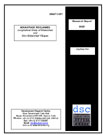 Part- IV of the longitudinal study comparing and measuring the impact of drought on watershed and non-watershed villages in drought affected districts of Gujarat. Longitudinal study is being conducted in the same 16 watershed and non-watershed villages every year for the last four years. This paper highlights that watershed village quickly regained their advantage over non-watershed villages when there is good rainfall year after series of drought years, However in the case of non-watershed villages the extent of recovery is low.
Part- IV of the longitudinal study comparing and measuring the impact of drought on watershed and non-watershed villages in drought affected districts of Gujarat. Longitudinal study is being conducted in the same 16 watershed and non-watershed villages every year for the last four years. This paper highlights that watershed village quickly regained their advantage over non-watershed villages when there is good rainfall year after series of drought years, However in the case of non-watershed villages the extent of recovery is low.
 Publications
Publications
 Research Studies / Research Papers
Research Studies / Research Papers 
 DSC has been working as a Project Implementation Agency (PIA) for the watershed programme of the Ministry of Rural Development, GoI in Meghraj and Modasa Blocks of Sabarkantha district. This programme has four watershed projects across seven villages covering 2055 hectares of land. It was felt that DSC as an implementing agency, there is a danger of losing sight of the main objective. So the CfID, an independent organization, has carried out an impact assessment study of the projects and also suggest the scope for future interventions. The primary objective is to analyze as to what extent the programme has been able to achieve the objective of improved livelihood through natural resource development.
DSC has been working as a Project Implementation Agency (PIA) for the watershed programme of the Ministry of Rural Development, GoI in Meghraj and Modasa Blocks of Sabarkantha district. This programme has four watershed projects across seven villages covering 2055 hectares of land. It was felt that DSC as an implementing agency, there is a danger of losing sight of the main objective. So the CfID, an independent organization, has carried out an impact assessment study of the projects and also suggest the scope for future interventions. The primary objective is to analyze as to what extent the programme has been able to achieve the objective of improved livelihood through natural resource development.  Documentation of different models and mobilization process operationalised by different NGOs throughout India, identification and prioritisation of variables contributing to the success and sustainability of village institutions in managing natural resources, and arriving at design principles that could be adapted on wider scale without impinging on area specific factors.
Documentation of different models and mobilization process operationalised by different NGOs throughout India, identification and prioritisation of variables contributing to the success and sustainability of village institutions in managing natural resources, and arriving at design principles that could be adapted on wider scale without impinging on area specific factors.  This study was conducted to find out the feasibility of federating the watershed associations for taking up 'Watershed Plus' activities. This study looks critically into the functioning of federations of agriculture-based village level institutions with an emphasis on their financial viability and support provided by promoting non-governmental organizations.
This study was conducted to find out the feasibility of federating the watershed associations for taking up 'Watershed Plus' activities. This study looks critically into the functioning of federations of agriculture-based village level institutions with an emphasis on their financial viability and support provided by promoting non-governmental organizations.  The hypothesis of this study was that watershed villages have advantage over non-watershed villages in drought prone areas. This is the first study to test the hypothesis for the comparison and measurement of the impact of drought on watershed and non-watershed villages in drought-affected districts of Gujarat-the original study that later became Part I of the Longitudinal Study.
The hypothesis of this study was that watershed villages have advantage over non-watershed villages in drought prone areas. This is the first study to test the hypothesis for the comparison and measurement of the impact of drought on watershed and non-watershed villages in drought-affected districts of Gujarat-the original study that later became Part I of the Longitudinal Study.  Part II of the longitudinal study comparing and measuring the impact of drought on watershed and non-watershed villages in drought affected districts of Gujarat. Findings of this study indicate that in the second year of drought the watershed village continues to enjoy advantage over non-watershed villages.
Part II of the longitudinal study comparing and measuring the impact of drought on watershed and non-watershed villages in drought affected districts of Gujarat. Findings of this study indicate that in the second year of drought the watershed village continues to enjoy advantage over non-watershed villages.  Scientific treatment of watershed is to begin the treatment of the watershed at the ridge and then come down to the valley. Under the ridge to valley approach forestland that are in the ridge has to be treated. In the 1994 watershed guidelines there was no provision for treatment of forestland. Therefore Government of India issued instructions in 1998 that specified that PIA's should also treat the forestland under Joint Forest Management programme. This paper reports the finding that the revised guideline is not being implemented.
Scientific treatment of watershed is to begin the treatment of the watershed at the ridge and then come down to the valley. Under the ridge to valley approach forestland that are in the ridge has to be treated. In the 1994 watershed guidelines there was no provision for treatment of forestland. Therefore Government of India issued instructions in 1998 that specified that PIA's should also treat the forestland under Joint Forest Management programme. This paper reports the finding that the revised guideline is not being implemented.  Part III of the longitudinal study comparing and measuring the impact of drought on watershed and non-watershed villages in drought affected districts of Gujarat. This paper highlights that when the drought condition continues for more than two/three years, watershed villages lose their advantage over non-watershed villages. This paper critically brings out declining advantage of watershed villages in continuing drought years.
Part III of the longitudinal study comparing and measuring the impact of drought on watershed and non-watershed villages in drought affected districts of Gujarat. This paper highlights that when the drought condition continues for more than two/three years, watershed villages lose their advantage over non-watershed villages. This paper critically brings out declining advantage of watershed villages in continuing drought years.  One of the objectives of the watershed programme is ensure drinking water security in the watershed villages. This study explores what is the status of drinking water security in the watershed villages. One of the major findings suggests that in the watershed villages drinking water security has not been given adequate priority in the watershed planning and implementation. The founding and recommendations of the study led to modifications of the watershed guidelines of Ministry of rural development.
One of the objectives of the watershed programme is ensure drinking water security in the watershed villages. This study explores what is the status of drinking water security in the watershed villages. One of the major findings suggests that in the watershed villages drinking water security has not been given adequate priority in the watershed planning and implementation. The founding and recommendations of the study led to modifications of the watershed guidelines of Ministry of rural development.  The watershed programme under Ministry of Rural Development is implemented since 1994 and after 10 years it is opportune time to assess what is the benefit in relation to the substantial cost in watershed implementation .The objective of this study is to calculate costs incurred in terms of structures created, human resource cost, administrative expenses incurred under the watershed project against which to measure in money terms the tangible and intangible benefits.
The watershed programme under Ministry of Rural Development is implemented since 1994 and after 10 years it is opportune time to assess what is the benefit in relation to the substantial cost in watershed implementation .The objective of this study is to calculate costs incurred in terms of structures created, human resource cost, administrative expenses incurred under the watershed project against which to measure in money terms the tangible and intangible benefits.  Under the watershed programme various assets are created in both public and private land. Ensuring proper maintenance of watershed assets is imperative for ensuring continuous return from the high investment made in creating these assets. The objectives of the study are to find out the present state of maintenance of private and public assets in the post implementation period, ascertain the status of fund, meant for the maintenance of the public assets. The status brought out the need for a regime to be established for the maintenance of physical assets at the village level and how the contribution collected for watershed development can be better utilised for post project maintenance and enhancement of the livelihoods of the rural communities.
Under the watershed programme various assets are created in both public and private land. Ensuring proper maintenance of watershed assets is imperative for ensuring continuous return from the high investment made in creating these assets. The objectives of the study are to find out the present state of maintenance of private and public assets in the post implementation period, ascertain the status of fund, meant for the maintenance of the public assets. The status brought out the need for a regime to be established for the maintenance of physical assets at the village level and how the contribution collected for watershed development can be better utilised for post project maintenance and enhancement of the livelihoods of the rural communities.  Participatory watershed guidelines emphasised on providing benefits of watershed to the resource poor and deprived communities through income generation and involvement in watershed programme. This paper critically examines who benefits from watershed programme. In this paper an attempt has been made to understand whether women, landless, small and marginal farmers are gaining from the watershed intervention. The study also finds out what is the proportion of investment for generating individual and common benefits.
Participatory watershed guidelines emphasised on providing benefits of watershed to the resource poor and deprived communities through income generation and involvement in watershed programme. This paper critically examines who benefits from watershed programme. In this paper an attempt has been made to understand whether women, landless, small and marginal farmers are gaining from the watershed intervention. The study also finds out what is the proportion of investment for generating individual and common benefits.  Part- IV of the longitudinal study comparing and measuring the impact of drought on watershed and non-watershed villages in drought affected districts of Gujarat. Longitudinal study is being conducted in the same 16 watershed and non-watershed villages every year for the last four years. This paper highlights that watershed village quickly regained their advantage over non-watershed villages when there is good rainfall year after series of drought years, However in the case of non-watershed villages the extent of recovery is low.
Part- IV of the longitudinal study comparing and measuring the impact of drought on watershed and non-watershed villages in drought affected districts of Gujarat. Longitudinal study is being conducted in the same 16 watershed and non-watershed villages every year for the last four years. This paper highlights that watershed village quickly regained their advantage over non-watershed villages when there is good rainfall year after series of drought years, However in the case of non-watershed villages the extent of recovery is low. 







